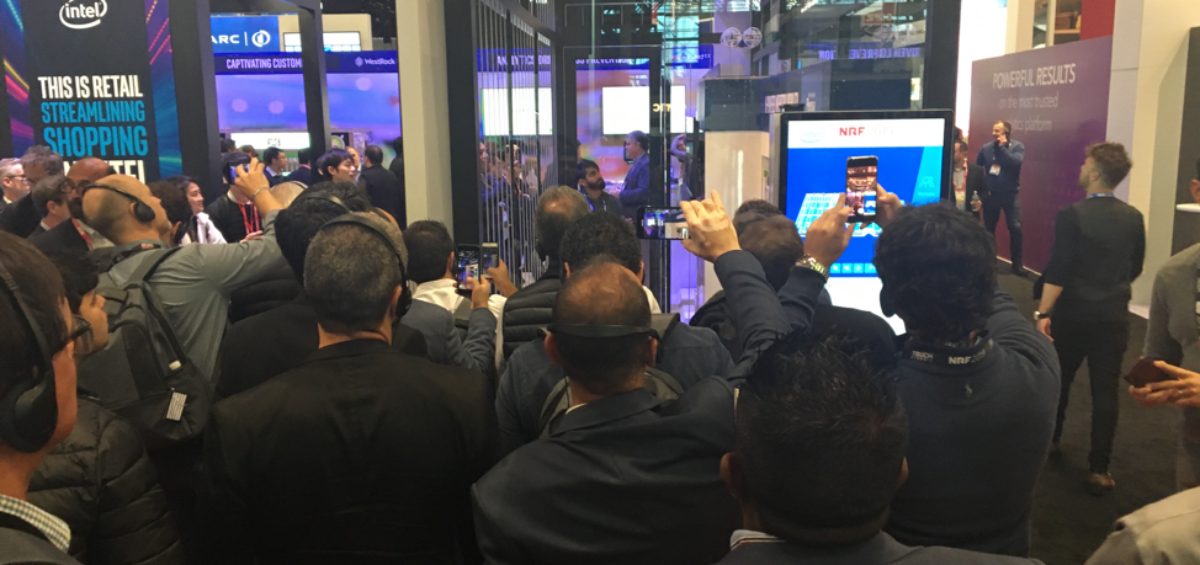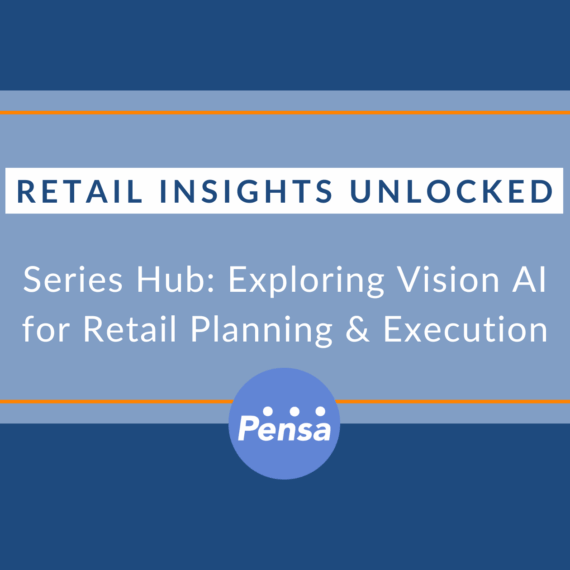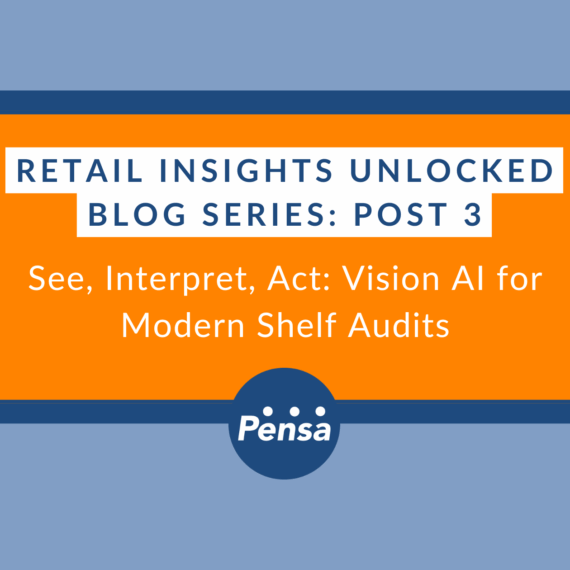While the dust of a thousand booth teardowns may have long-since settled at the Javits Center and NRF2019 has dwindled in the rearview mirror for many, I’m finding Retail’s Biggest Show is still fresh on the minds of a lot of people. I continue to get several emails and inquiries every day about Pensa’s launch from stealth and the unveiling of our retail inventory visibility solution in Intel’s booth.
Thousands of visitors checked out our nearly non-stop demos, all of which my co-founder Jason and I delivered personally while cramming in dozens of press interviews and countless one-off conversations in the brief periods in between. (I’d wager Pensa was one of the top buyers of Javits hot dogs at NRF2109. Plain dogs on a bun were the fastest and least messy way to refuel in the milliseconds between demo #50, interview #30 and chat #500. I think we’ve had our fill of franks until NRF2020!)
As I reflect back on all of the buzz and activity, I continue to think about the expressions I saw on so many of the faces that watched Pensa’s autonomous drone take off from its base station to scan the shelves of our mock retail store. The best single word I can come up with to describe what I saw would be, glee. Nearly everyone had their phones out to record the demo from beginning to end.
Yes, Drones Are Cool…
People love to watch them and reporters love to film and broadcast them. We understand the sex appeal and the sizzle. Pensa’s drones were like magnets attracting people to our NRF booth and were a big part of why so many people had that look of glee on their faces.
But Pensa’s drones are more than just sex symbols (thank you very much). They are an indispensable part of a system that is engineered to maximize the contribution of each part in order to add up to a really compelling whole. In other words, the drones aren’t just there to look good.
They Play a Key Role Yet Are Easily Replaceable
A few weeks back, Fortune wrote about an alternative way to go after the retail inventory visibility problem, using fixed cameras to scan shelves. As the article accurately noted, “Depending on its size, a store may need anywhere from 500 to 600 cameras” (emphasis mine). What the article failed to do next was to dig in to the dismal economics of that model.
Five hundred to 600 cameras – multiplied by hundreds or thousands of retail locations – are an expensive proposition and a big maintenance headache. You can say much the same for the ground robots approach. Yes, robots are cool, too. (Who doesn’t like the idea of bumping into Rosie the Robot at their local grocery store?) But fixed cameras and ground robots are costly, cumbersome and brittle methods when it comes to gathering data on real-time shelf inventory conditions. And, ironically, even with the large numbers of fixed cameras, still seem to have problems getting the right degree of accuracy in seeing and recognizing the shelf items.
Drones for computer vision capture are a different bird (pun intended) entirely. One drone is the equivalent of having 100 cameras fixed on each and every product on each and every shelf. They capture data faster, more reliably and more accurately, at scale, than any other approach. And if a drone fails, you can replace it for about the cost of your gym membership.
Drones are the roving sensors of the future
So, the drones are a big deal. They act as the traveling eyes that sense and transmit their inputs. Kind of an Internet of Traveling Things (IoTT?) An elegant, important and easily replaceable big deal – i.e., if one breaks, you can plug another one into your operation about as quickly and easily as you can pop a new blade into your Gillette razor.
But bigger picture, the real beauty of the approach is in the overall system. The crowds at NRF got that, because as it turns out, they weren’t just wowed by the drone. They were also visibly delighted when our booth monitors refreshed with what the backend system “sees” and records for analysis in our intelligent cloud. Not just transmitting photos or videos but actually visually recognizing each of the products on the shelf, down to the individual product item and SKU level. That was also a second ‘wow’ for people watching. The brands and retailers identified with this quickly translating to reducing stockouts. Without the personal pain and tedium of otherwise having to stare at the shelves to figure it out by hand.
Drones on the front end are cool and photogenic. But the magic is the combination of the drone and what’s behind it, the system smarts housed at the edge and in the cloud.
Feel free to reach out with any thoughts or questions. And, keep your camera phones handy. More is coming.







